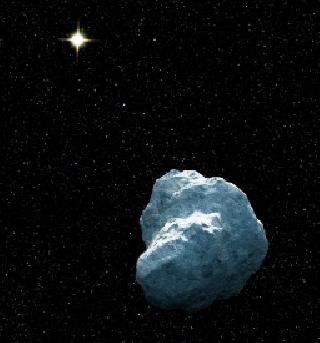
An artistic illustration of BP Piscium. A NASA photo
WASHINGTON (BNS): A distant star – a more evolved version of our Sun – devouring another star or planet has caught the attention of astronomers.
The red giant star, lying around 1,000 light years away from Earth, appears to be a more evolved version of our Sun, but with a dusty and gaseous disk surrounding it.
NASA’s Chandra X-ray Observatory has detected the star, named BP Piscium (BP Psc). The Observatory has captured a pair of jets several light years long blasting out of the system in opposite directions.
While the disk and jets are characteristics of a very young star, several clues – including the new results from Chandra – suggest that BP Psc is not what it originally appeared to be.
Analysing the Chandra data, researchers suggest that the “cannial” star is quite old and in its ‘red giant’ phase. A star reaches this stage when it runs out of nuclear fuel, expands and sheds its outer layer.
The Chandra-detected disks and jets of the star, in fact, are the remnants of a recent and catastrophic interaction whereby a nearby star or giant planet has been consumed by BP Psc, according to the researchers.
“It appears that BP Psc represents a star-eat-star Universe, or maybe a star-eat-planet one. Either way, it just shows it's not always friendly out there,” said Joel Kastner of the Rochester Institute of Technology, who led the Chandra study.
In their study, the scientists have found several clues that suggest that BP Psc is an old star. Firstly, it is not located near any star-forming cloud, and there are no other known young stars in its immediate vicinity.
Secondly, like most elderly stars, BP Psc's atmosphere contains only a small amount of lithium. Thirdly, its surface gravity appears to be too weak for a young star.
“BP Psc shows us that stars like our Sun may live quietly for billions of years, but when they go, they just might take a star or planet or two with them,” said co-author David Rodriguez.
The new results appear in The Astrophysical Journal Letters.
 Previous Article
Previous Article Next Article
Next Article













The Indian Air Force, in its flight trials evaluation report submitted before the Defence Ministry l..
view articleAn insight into the Medium Multi-Role Combat Aircraft competition...
view articleSky enthusiasts can now spot the International Space Station (ISS) commanded by Indian-American astr..
view article